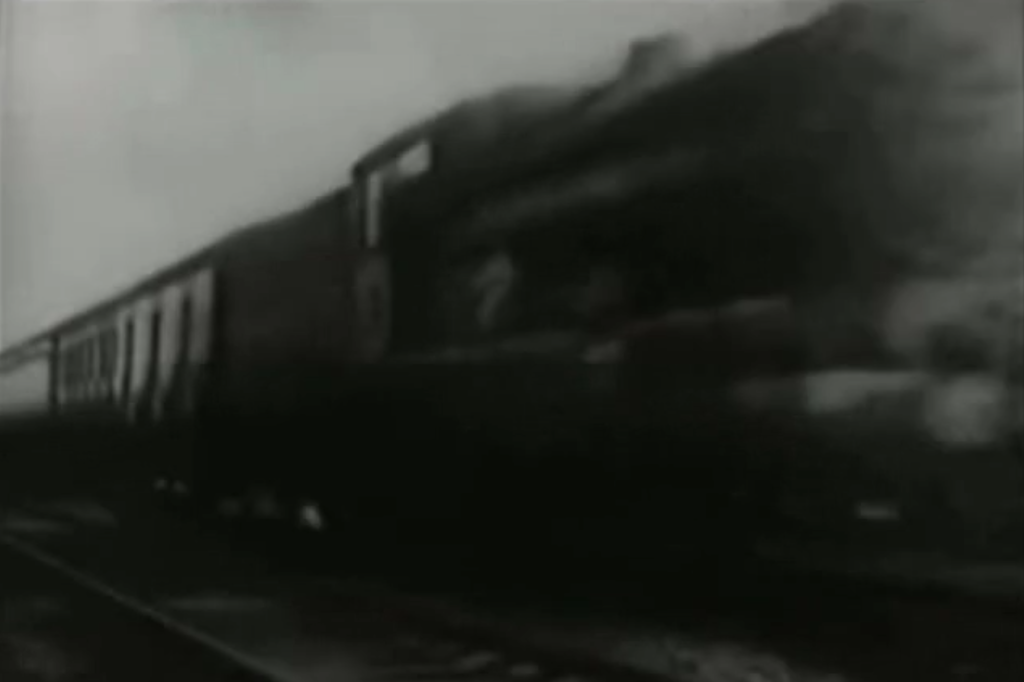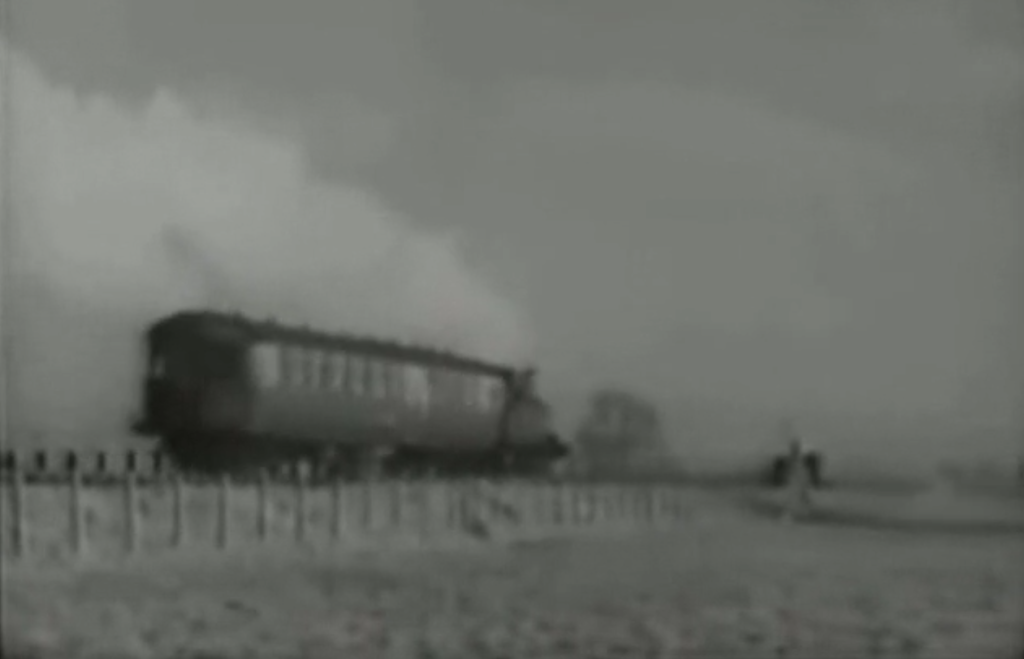
GB
1949
1hr 13mins
Dir: Godfrey Grayson
Starring: Valentine Dyall and Julia Lang
A young woman goes missing under strange circumstances, leaving Dr Morelle to investigate
Adapted from a play by Wilfred Burr this was a film version of the popular BBC Radio series about a doctor-turned-sleuth, and there are some really good railway scenes from the early BR transition period in what is only a cheaply made B-movie mystery. There is a very good and rather rare shot of an ex-GWR ‘Star’ Class 4-6-0 leaving London Paddington and two shots of passing expresses. Both are hauled by ex-GWR ‘Castle’ Class 4-6-0s, one with the stencil headcode ‘180’, and both with early ‘BRITISH RAILWAYS’ branding on the tenders. There is also a lovely panning shot of a GWR-liveried 1400-series 0-4-2T with an auto-coach on the Marlow branch. Early in the film there is an additional, scenic shot of a single track country branch with the exhaust of a distant steam train visible. As it transpires, this shot is part of a longer sequence and appears in the Paul Robeson musical The Proud Valley (1940) where it is revealed that the train is a mineral freight hauled by a GWR 45xx-series 2-6-2T somewhere in South Wales.






